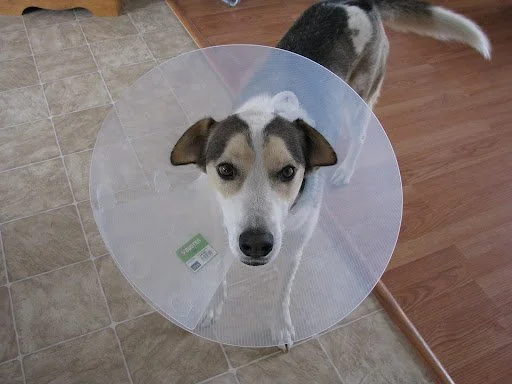Pet Blog > How To Treat Stomach Tacking In Dogs
How To Treat Stomach Tacking In Dogs
You often hear about gastrointestinal problems such as gastritis among people and how hard it can get for those suffering.
Have you ever heard of such gastrointestinal issues or bloating in dogs? Dogs also have similar problems, more commonly known as stomach tacking, which could even get severe.
If your dog has a severe stomach tacking issue, you need to get it treated for its safety. This article explains gastropexy and how to treat stomach tacking in dogs.
What Is Gastropexy?
Gastropexy is a surgical procedure conducted on dogs to prevent gastric dilatation and volvulus (GDV). GDV is commonly known as bloating and is primarily seen in large-breed dogs.
In this surgical procedure, the stomach is permanently attached to the muscle wall of the abdomen.
Gastropexy could be done as a preventative measure in a healthy dog or as part of the surgical management of GDV to prevent the recurrence of stomach tacking.
Gastric Dilatation And Volvulus (GDV)
Gastric Dilatation And Volvulus (GDV) is a life-threatening condition in which a dog’s stomach fills with gas (dilatation) and rotates within the body (volvulus), preventing the normal flow of fluid and gas through the stomach.
It is more common in deep-chested, large breed dogs such as German Shepherds, Great Danes, Basset Hound, Standard Poodles, Irish Setters, and Weimaraners.
In this condition, a dog’s stomach becomes dilated with gas/ fluid and becomes twisted on itself, preventing the flow of gas/ fluid. It increases the pressure within the abdomen and decreases the blood flow to stomach tissues.
Disruptions in blood supply can even lead to death. Therefore, GDV is fatal, and emergency treatment is necessary.
Indications Of GDV
There are a few signs that indicate bloating or GDV in dogs.
Excessive drooling
Non-productive vomiting
Swollen stomach
Pacing around the room aimlessly
Excessive panting
Whimpering or whining in pain
Restlessness
Rapid shallow breathing
Not all dogs with GDV will show all of these signs. The most common indications of GDV are often hard to recognize.
If you suspect your dog has GDV, immediately take it to the vet or emergency care hospital.
If your dog’s condition worsens, mainly if twisting has occurred, your dog could become pale, have a weak pulse, and may go into shock. Its heart rate could increase, and it may eventually collapse.
More severe signs are expected to occur in dogs with dilatation and volvulus.
How To Treat Stomach Tacking In Dogs
Gastropexy is the surgery performed to treat stomach tacking in dogs. It is proven very effective and is the most commonly used treatment for GDV.
Gastropexy involves inserting a tube down the dog’s throat and into his stomach. It is done so that the air in the stomach can escape through the tube to relieve the pressure.
Gastropexy Procedure In Dogs
The gastropexy procedure involves creating and attaching pyloric antrum to the right side of the abdominal wall. It prevents further twisting of the gastric organ. There are several types of the procedure involved in gastropexy performed in canines.
Incision Gastropexy
This involves attaching the gastric wall’s opposing muscular layer to the stomach’s right transversal wall.
Laparoscopic-assisted Gastropexy
In this procedure, the abdomen is secured using sutures or staples. This procedure shortens the time the dog is under anesthesia. Therefore, it leads to a small incision, less discomfort, and allows faster recovery than most other gastropexy procedures.
Circumcostal Gastropexy
This procedure involves taking a seromuscular flap from the dog’s abdomen that is wrapped around the last rib of the rib cage, securing the back.
Belt-looped Gastropexy
This procedure involves tunneling a seromuscular flap through the abdomen wall.
Tube Gastropexy
This involves placing a mushroom-tipped tube through the abdomen wall and into the gastric lumen.
Incorporating Gastropexy
This procedure involves including the abdomen wall into the linea alba closure.
During an emergency gastropexy, The stomach will be de-rotated or untwisted before tacking the stomach to the abdominal wall. A stomach tube is passed to reduce the pressure on the stomach wall and internal organs as soon as possible.
Sometimes, this may not be possible due to the rotation of the stomach. In such instances, a large catheter is inserted through the skin into the stomach to alleviate the pressure.
In addition, shock treatment needs to begin immediately, using intravenous fluids and emergency medications.
Efficacy Of Gastropexy In Dogs
Gastropexy is proven to be very effective in treating stomach tacking in dogs. Many vets say that they have seen improvement in the large number of canines that come for treatment.
The main objective of this surgery is to have permanent adhesions between the abdominal and gastric walls. A successful gastropexy should not affect the abdomen’s natural placement and gastric flow.
It should also have minimal complications and post-operative care.
Gastropexy Recovery In Dogs
A dog might have to stay in the hospital for a few days after successful surgery. It is primarily to see the impact of the procedure on the dog and to confirm that the surgery was successful.
Some dogs might be allowed to go home the same day. It depends on how successful the surgery was and the existence of any complications post-surgery.
Once the dog goes home, there will be some dietary restrictions until the stomach is fully healed. As it’s surgery, your dog will also have to limit physical activities for some time.
You should also put an Elizabethan collar (e.g. the dreaded “Cone of Shame”) around your dog’s neck to prevent it from scratching the incision site.
The vet would prescribe antibiotics and pain medication you should give your dog during recovery. These might not be required after the follow-up appointment in six weeks.
You should take your dog to remove the sutures in seven to ten days. The vet will check your dog’s status and let you know when it can get back to physical exercises. The exercise restriction period is usually two weeks.
Some vets bury the skin sutures, so they are not visible and do not require removal. The sutures will dissolve on their own.
Ipetguides.com provides a great deal of information on how to take care of a dog after surgery and general dog care tips.
Cost Of Gastropexy
The cost of gastropexy depends on the type of surgical procedure the vet performs on your dog. The vet will consider your dog’s medical status and other factors to decide which gastropexy procedure to perform.
If you can identify the symptoms and catch your dog’s GDV early, your vet will most probably conduct a non-emergency gastropexy which will cost approximately $400.
However, if you cannot identify the symptoms and your vet performs an emergency gastropexy procedure on your dog, it will cost an average of $1500 and sometimes even more.
Therefore, it’s vital to detect GDV signs in your dog as early as possible, as it will pose less risk to your dog’s health and cost less.
Pet insurance policies generally cover the costs for dogs’ gastropexy procedures and many other health conditions. Be prepared with pet insurance for your dog in a medical emergency.
How Does Bloating Occur In Dogs
Bloating occurs when the stomach fills with gas during digestion and prevents food from flowing to the small intestines, trapping the gas.
Some dogs are at a higher risk of developing this condition than others. Large dogs with deep chests and specific breeds are more prone to develop this condition. These breeds include:
Great Danes
German shepherds
Irish setters
Basset hounds
Akitas
Doberman pinschers
Boxers
Labrador retrievers
Dogues de Bordeaux
Saint Bernards
Rhodesian ridgebacks
Old English sheepdogs
Gordon setters
Standard poodles
Weimaraners
Causes For GDV In Dogs
Several factors can cause GDV in dogs, apart from their breed and build. Causes for GDV include the following.
Age: Older dogs are at higher risk of developing GDV
Genetic predispositions: Such as chest dimensions
Gender: Male dogs are at higher risk than females
Temperament: Fearful, nervous, or anxious dogs are at higher risk of developing this condition
Eating habits: Dogs who are fed a single meal a day are at higher risk than those that are fed several small meals
Exercise: Dogs who exercise on a full stomach are at higher risk
Gastropexy Prevention In Dogs
Gastropexy generally occurs in large dogs with deep chests, and this type of breed disposition GDV cannot be prevented. GDV caused by other factors like old age and temperament also cannot be prevented.
However, if your dog is at risk of getting GDV due to feeding patterns or exercise, you can prevent it in the following ways.
Feed your dog two or more meals daily instead of feeding it all in a single meal.
Slow-feed your dog using puzzle feeders, slow-feeder bowls, and snuffle mats.
Avoid exercise soon after meals.
Preventative Gastropexy
Preventative gastropexy is a procedure done at the early stages of your dog’s life, reducing the risk of a future emergency.
Vets usually do it at the time of desexing. Your dog will be under anesthesia at this time. You can also do it at the same time as a keyhole spay.
Conclusion
Treating stomach tacking through gastropexy is vital for your dog’s health. GDV is a life-threatening condition, and you need to treat it immediately. Take your dog to a vet if you notice any signs indicating your dog is suffering from GDV.
Frequently Asked Questions
Can A Dog Bloat With A Tacked Stomach?
A dog could bloat with a tacked stomach, and it depends on the dog’s overall condition.
How Long Does It Take For A Dog To Recover From Gastropexy?
It takes about two to three weeks to recover from gastropexy and continue activities as usual.
What Can I Feed My Dog After Gastropexy?
You can feed your pet his regular diet and water. However, you should avoid overfeeding and feeding all in a single meal.
Check out our other Dog Blog articles
Return to the Pet Blog



